- All Products
- All Products
- Hospitor : Deep Dive In to Korea : Seoul : Sokcho : Gyeongju : Busan : Gwangju
Hospitor : Deep Dive In to Korea : Seoul : Sokcho : Gyeongju : Busan : Gwangju
9 Nights / 10 Days
For Latest Updates.
Contact us here for Bulk discount
Customer's Choice/Rating For This Package
Rating
Share with your loved one!
Terms and Conditions
🌏Hospitor : Deep Dive Into Korea
Brought to you by Hospitor Management Pvt. Ltd.
🧭Explore Korea Like Never Before!
Embark on a spectacular journey across South Korea with Hospitor’s “Deep Dive Into Korea” tour, meticulously curated for culture enthusiasts and wanderers alike. From the vibrant cityscape of Seoul to the coastal charm of Sokcho, the historic elegance of Gyeongju, the modern allure of Busan, and the artistic heart of Gwangju—this 10-day experience unveils Korea’s soul in every step. With local insights, guided excursions, and authentic cuisine, this is more than just a holiday—it’s a story you'll live. Perfect for groups of 10 or more seeking a seamless, enriching travel experience.
Package Highlights:
- 🏨 Luxury Accommodation: Stay at 3-Star Hotels will be arranged.
- 🍴 Exquisite Dining Options: Enjoy gourmet Break-fast meals at fine-dining restaurants, catering to your preferences with hygienic and delicious food.
- 🚗 Premium Transfers: Travel in style with luxury vehicles for all your transportation needs, ensuring a smooth and comfortable journey.
- 💼 Personalized Assistance: Dedicated staff available 24/7 to cater to your every need, from guided tours to personalized requests.
Why Choose Us?
At Hospitor Management Pvt. Ltd., we prioritize your tour experience by offering exceptional service, attention to detail, and unwavering support throughout your journey. With years of expertise, we make your trip a memorable and meaningful experience.
Embark on your adventurous journey in style. Book your Hospitor : Deep Dive Into Korea Tour Package with Hospitor Management Pvt. Ltd. today!
🌏 Hospitor : Deep Dive Into Korea Tour Package typically include a variety of highlights, such as:
- Transportation: Private, air-conditioned transportation to and from the airport, as well as local travel
- Accommodation: Equivalent to 3-Stars Category Hotels with luxury stays
- Meals: Daily Break-fast meals shall be provided
- Guided tours: Expert guides can enhance the experience by providing valuable insights into the significance of each ritual
- Visa and insurance: Full assistance with visa application and processing, including comprehensive travel insurance (VISA Fees and Insurance Premiums shall be applicable exclusively)
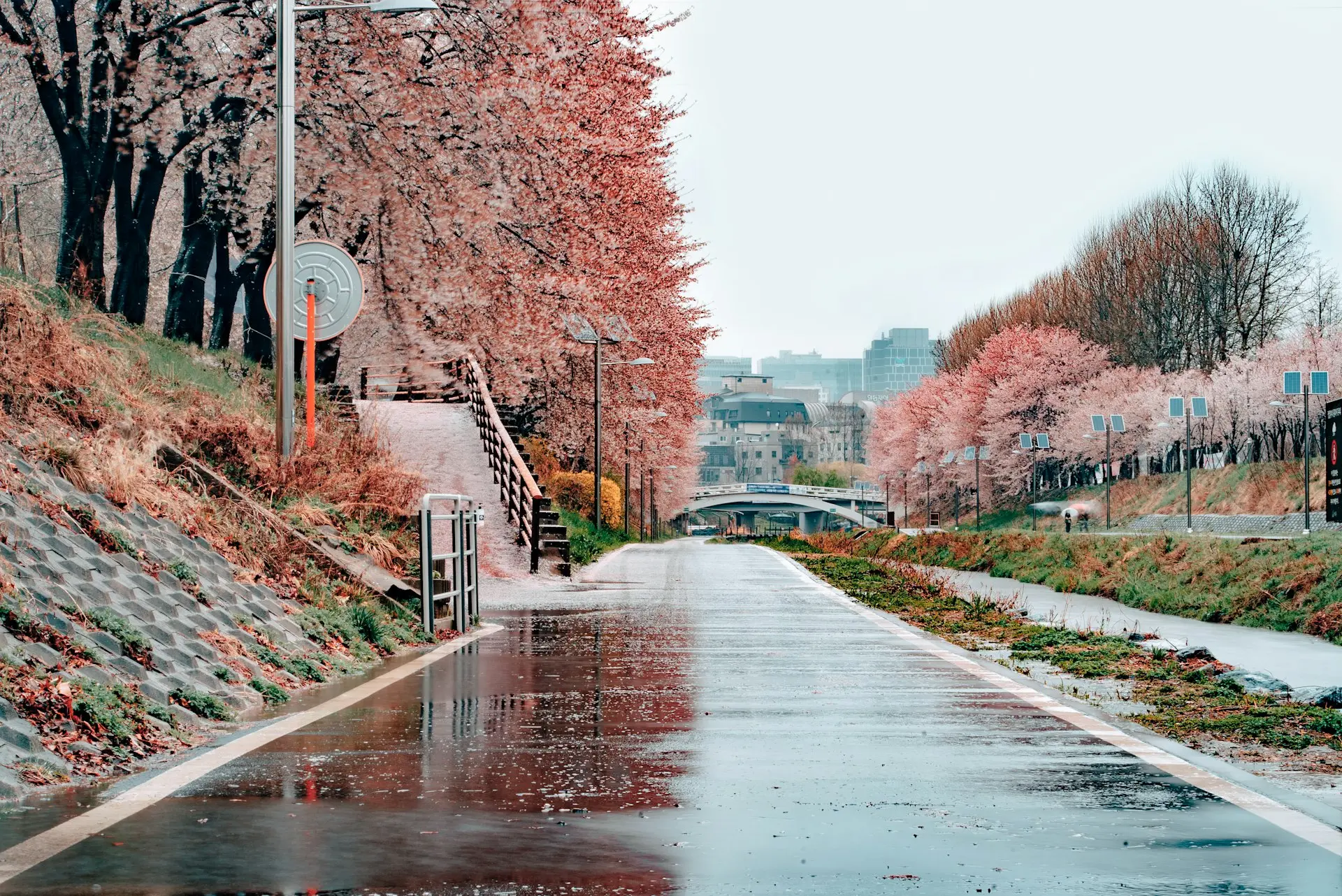
Seoul - Day 01
Arrived in seoul. Our representative will meet you & transfer to your hotel in seoul. Seoul is the capital and largest city of south korea. It is located in the northwestern part of the country, near the border with north korea. Seoul is not only the political and economic center of south korea but also its cultural and historical heart.
Gwanghwamun square stretches out from gwanghwamun gate, once the main gate of gyeongbokgung palace, to sejongno sageori intersection. Gwanghwamun square is divided into six sections. At its center stands a statue of king sejong the great, the fourth and most respected king of the joseon dynasty and creator of hangeul, korea's alphabet; and a statue of admiral yi sunshin, a naval commander noted for his victories against the japanese navy during the japanese invasions of korea (1592-1598) and a hero among koreans. Other attractions include the popular 12.23 fountain, a sculpture of haechi (the symbol of seoul), a flower carpet, and yeoksamulgil (or the "Waterway of history") on either side of the square.
Cheonggyecheon stream is an 11 km long modern stream that runs through downtown seoul. Created as part of an urban renewal project, cheonggyecheon is a restoration of the stream that was once there before during the joseon dynasty (1392-1910). The stream was covered with an elevated highway after the korean war (1950-1953), as part of the country's post-war economic development. Then in 2003, the elevated highway was removed to restore the stream to its present form today. The stream starts from cheonggye plaza, a popular cultural arts venue, and passes under a total of 22 bridges before flowing into the hangang (river), with many attractions along its length.
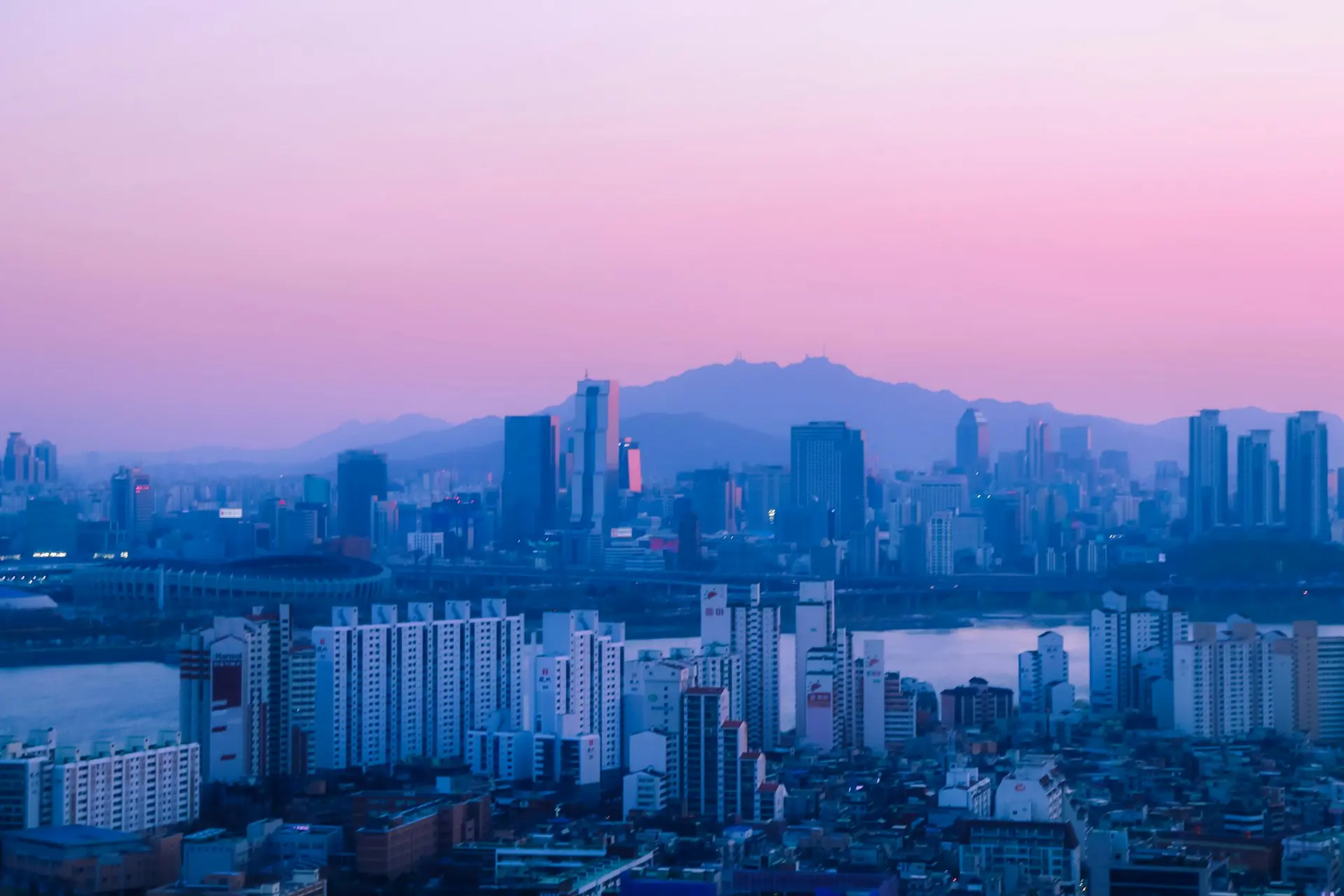
Seoul - Day 02
After breakfast we proceed for seoul city highlight tour. Some of the places we will see during our highlight tour:
Gwanghwamun square: stretches out from gwanghwamun gate, once the main gate of gyeongbokgung palace, to sejongno sageori intersection. Gwanghwamun square is divided into six sections. At its center stands a statue of king sejong the great, the fourth and most respected king of the joseon dynasty and creator of hangeul, korea's alphabet; and a statue of admiral yi sunshin, a naval commander noted for his victories against the japanese navy during the japanese invasions of korea (1592-1598) and a hero among koreans.
Gyeongbokgung palace: built in 1395, gyeongbokgung palace is also commonly referred to as the northern palace because its location is furthest north when compared to the neighboring palaces of changdeokgung (eastern palace) and gyeonghuigung (western palace) palace. Gyeongbokgung palace is arguably the most beautiful, and remains the largest of all five palaces.
Blue house (presidential residence): the signature markings of the presidential residence of cheong wa dae are its blue tiles. It is the first thing that catches one's attention upon entering the premises. The blue tiles and the smooth roof blend beautifully with bugaksan mountain in the backdrop.
Bukchon hanok village: surrounded by gyeongbokgung palace, changdeokgung palace and jongmyo shrine, it is home to hundreds of traditional houses, called hanok, that date back to the joseon dynasty. The name bukchon, which literally translates to "Northern village," came about as the neighborhood lies north of two significant seoul landmarks, cheonggyecheon stream and jongno.
Insadong antique alleyis: “well known as a traditional street to both locals and foreigners” and represents the “culture of the past and the present”. It contains a mixture of historical and modern atmosphere and is a “unique area of seoul that truly represents the cultural history of the nation.”
Jogyesa temple: is the center of korean buddhism. The temple was built in the late 14th century during the goryeo period and was once turned into ashes due to fire and was rebuilt under the name of gackhwangsa temple in 1910 with the effort of many respectful monks, namely han yong-un and lee hee-gwang.
Cheonggyecheon stream: is an 11 km long modern stream that runs through downtown seoul. Created as part of an urban renewal project, cheonggyecheon is a restoration of the stream that was once there before during the joseon Dynasty (1392-1910). The stream was covered with an elevated highway after the korean war (1950-1953), as part of the country's post-war economic development. Then in 2003, the elevated highway was removed to restore the stream to its present form today.
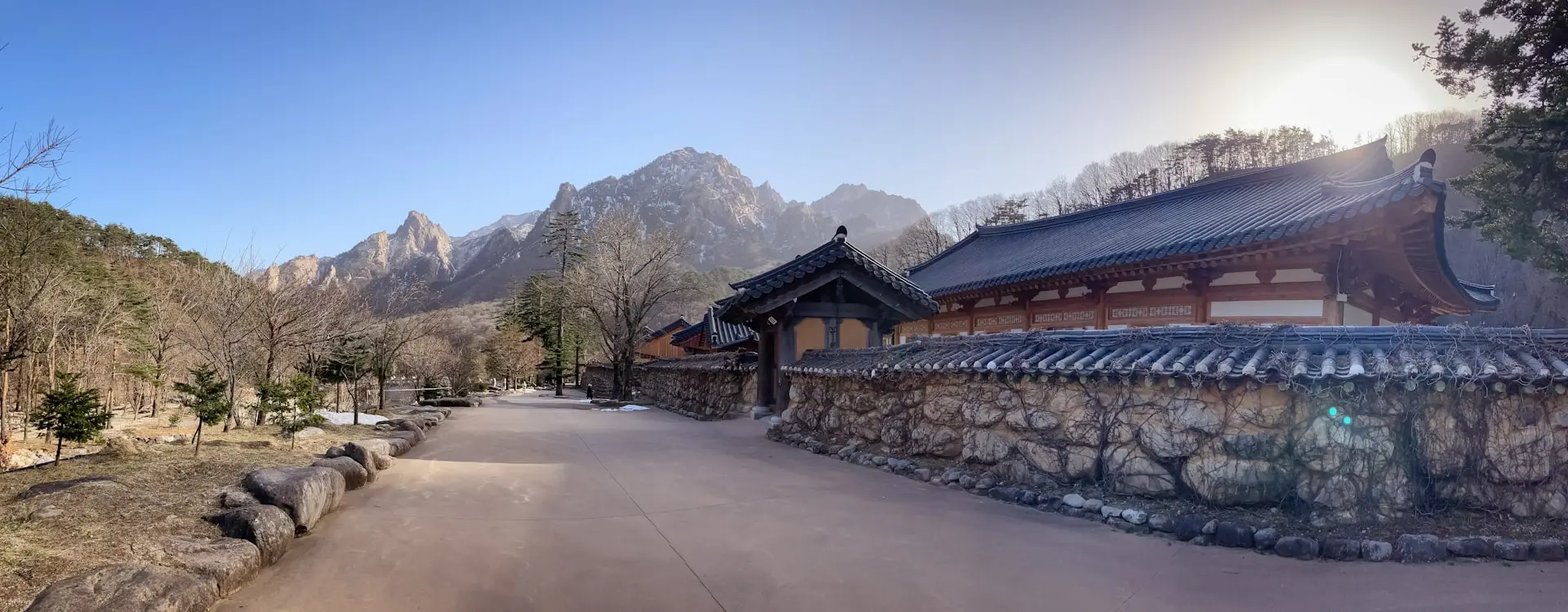
Seoul - Day 03
Check-out & transfer to sokcho. On arrival in sokcho we visit seorak mountains, sinheungsa temple, gwongeumseong fortress by seorak cable car.
Seoraksan national park: with its highest point, daecheongbong peak, located 1,708 m above ground, seoraksan mountain is one of the most beautiful mountains in korea, boasting a variety of colorful flowers in spring, refreshing clear water streams in summer, vibrant autumn foliages in fall, and a scenic snow-covered landscape in winter.
Seorak cable car: is located at sogongwon area in seoraksan national park. The cable car takes you to gwongeumseong fortress, located about 800 meters above sea level. Then you get off the cable car, you can walk to gwongeumseong fortress which takes about 10~20 minutes on foot. Then, you will be able to take in the breathtaking views of east sea, seoraksan national park, and sokcho. Later we walk at sokcho city’s central market & streets. Sokcho tourist & fishery market is a famous tourist market located at sokcho, in gangwon province. Famous for its delicious market foods and fresh seafood, it is a must-visit place when you come to sokcho. The market is very well known for "Dak gangjeong" or sweet and sour fried chicken. Close to the sea, you can also buy fresh seafood. Ranging from raw seafood to dried ingredients and ready-to-eat dishes, this market is the perfect place to test your bargaining skills and try authentic korean seafood.
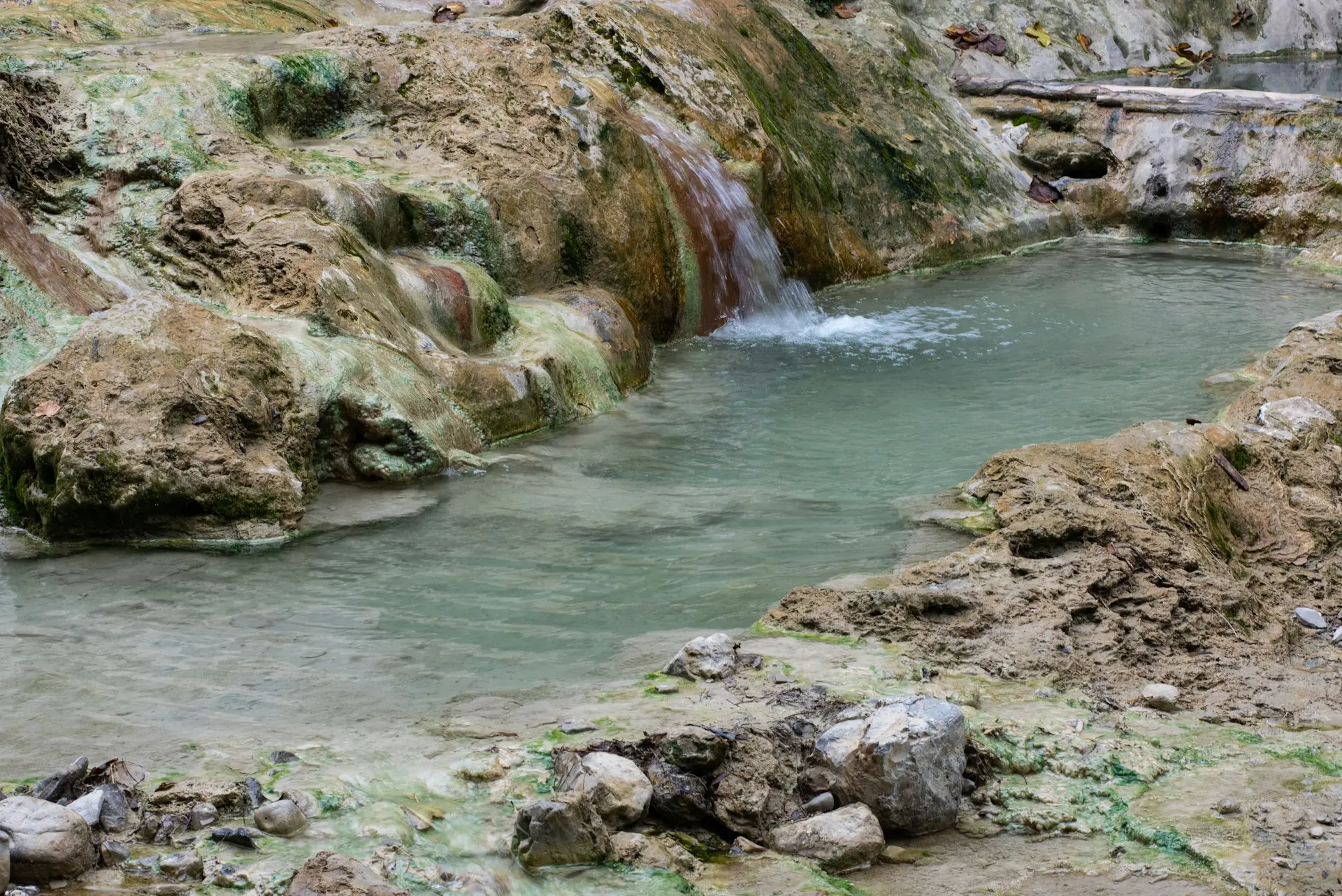
Seoul - Day 04
Check-out from hotel and transfer to andong. Hahoe village is home to descendants of the ryu clan of pungsan and is well-known for its traditional houses. Birthplace of renowned scholars of the joseon period such as gyeomam ryu un ryong and seoae ryu seong-ryong, the village became even more famous after queen elizabeth of england visited on april 21, 1999. Hahoe village (translating to “village enveloped by water”) gets its name from nakdong river, which flows around the town’s perimeter. The village is located at the foothills of hwasan mountain, an offshoot of taebaek mountain that rises up to the east. The center of the village is populated by large tile-roofed houses belonging to the ryu clan, adding their own unique charm to the surrounding thatched roofs. Later we transfer to gyeongju.
Within daereungwon tomb complex is cheonmachong tomb(ancient tomb no. 155), which was excavated in 1973. Cheonmachong tomb consists of a wooden coffin placed inside an underground chamber mounded with boulders and earth, characterized as a typical upper class tomb of the silla period. The mound has a height of 12.7 m with a diameter of 50 m, and consists of a layer of rocks collected from streams. Below the rock layer is a wooden chamber that is 6.5 m long and 2.1 m wide, reaching 2.1 m in height, with the wooden coffin at its center. A total of 11,526 artifacts were discovered within the tomb, including cheonmado, an artwork considered highly valuable as it is korea's first artwork to be excavated from an ancient tomb.Cheomseongdae observatory is the oldest existing astronomical observatory in asia. Constructed during the reign of queen seon-deok (r. 632-647), it was used to observe stars in order to forecast the weather.
Gyeongju donggung palace and wolji pond was the secondary palace site which was used by the crown prince of the silla kingdom. It also served as a banquet site for important national events and important visitors. After the fall of silla, the site was abandoned and forgotten. The pond was referred to as "Anapji" during the goryeo and joseon periods. In the 1980s, a pottery fragment with letters “wolji” (a pond that reflects the moon) carved onto it was found, revealing the true name of the pond. After the discovery, the site was renamed to the current donggung palace and wolji pond.
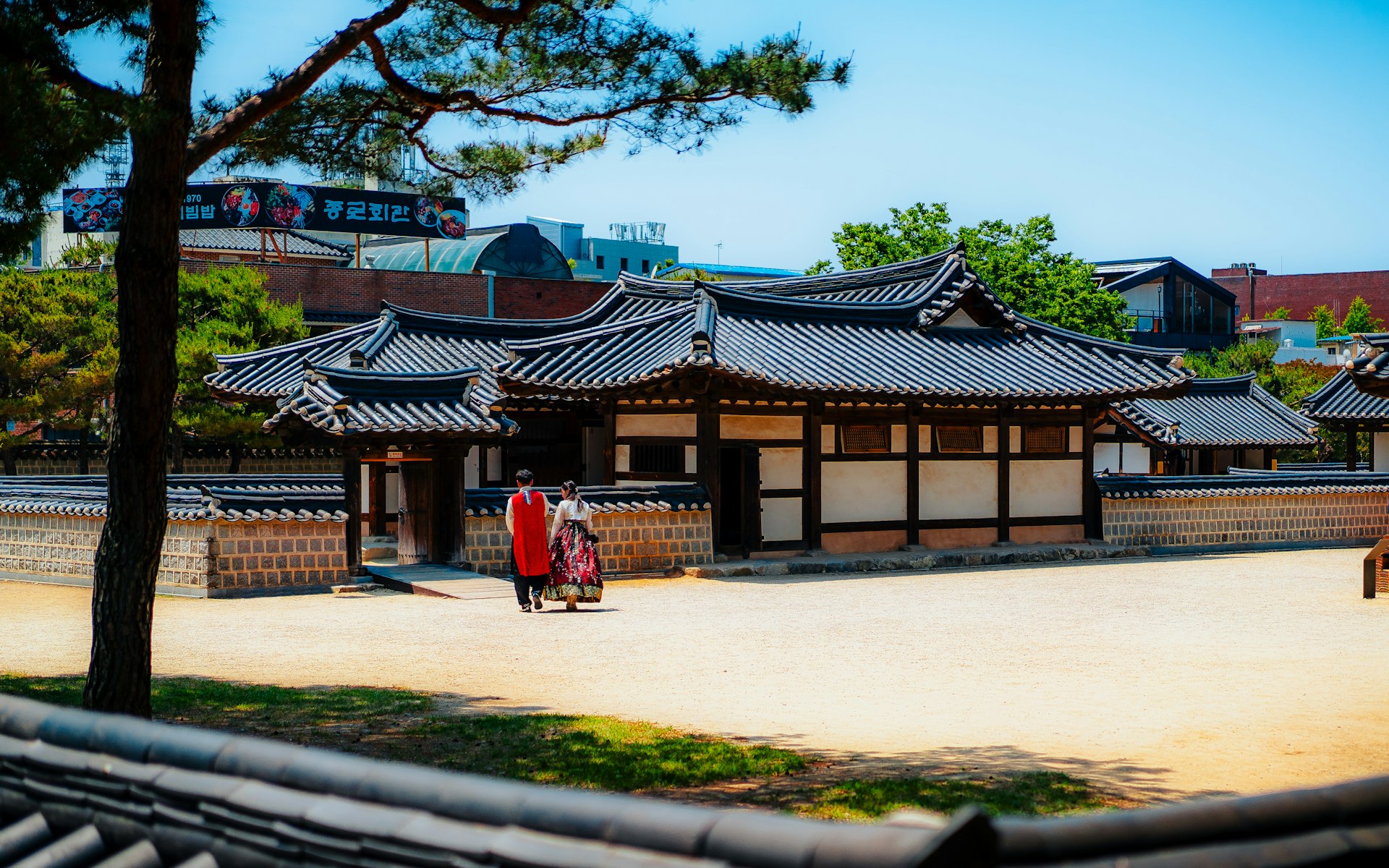
Seoul - Day 05
Haedong yonggungsa temple is situated on the coast of the north-eastern portion of busan. This superb attraction offers visitors the rare find of a temple along the shore line; most temples in korea are located in the mountains. Haedong yonggungsa temple was first built in 1376 by the great buddhist teacher known as naong during the goryeo dynasty. One of the special sites at the temple are the 108 stairs and stone lanterns lining the rocky landscape. After going down the 108 steps, one will be delighted with the beauty of the temple. Midway down the 108 steps one can stop and enjoy the calming sounds of the waves, and view the majestic sunrise.
Gwangan bridge stretches over 7.4km from namcheon-dong (suyeong-gu, busan) to centum city (u-dong, haeundae-gu). It is the longest bi-level bridge over the ocean in korea. In addition to providing a quick way to get around, the bridge offers breathtaking views of nearby attractions, including the endlessly unfolding ocean, oryukdo island, hwangnyeongsan mountain, gwangalli beach, dongbaekseom island, and dalmaji hill. Equipped with thousands of led lights, the bridge showcases a beautiful lighting exhibition at night that changes with the seasons.
Haeundae beach is the most famous beach in busan. The white sand beach is roughly 1.5 k m long, over a 30-50 m wide area, creating a beautiful coastline before a shallow bay, making haeundae beach perfect for swimming. Haeundae beach is also famous for various cultural events and festivals held throughout the year. Other facilities in the area include dongbaek island, busan aquarium, a yachting dock, bexco, driving courses and more.
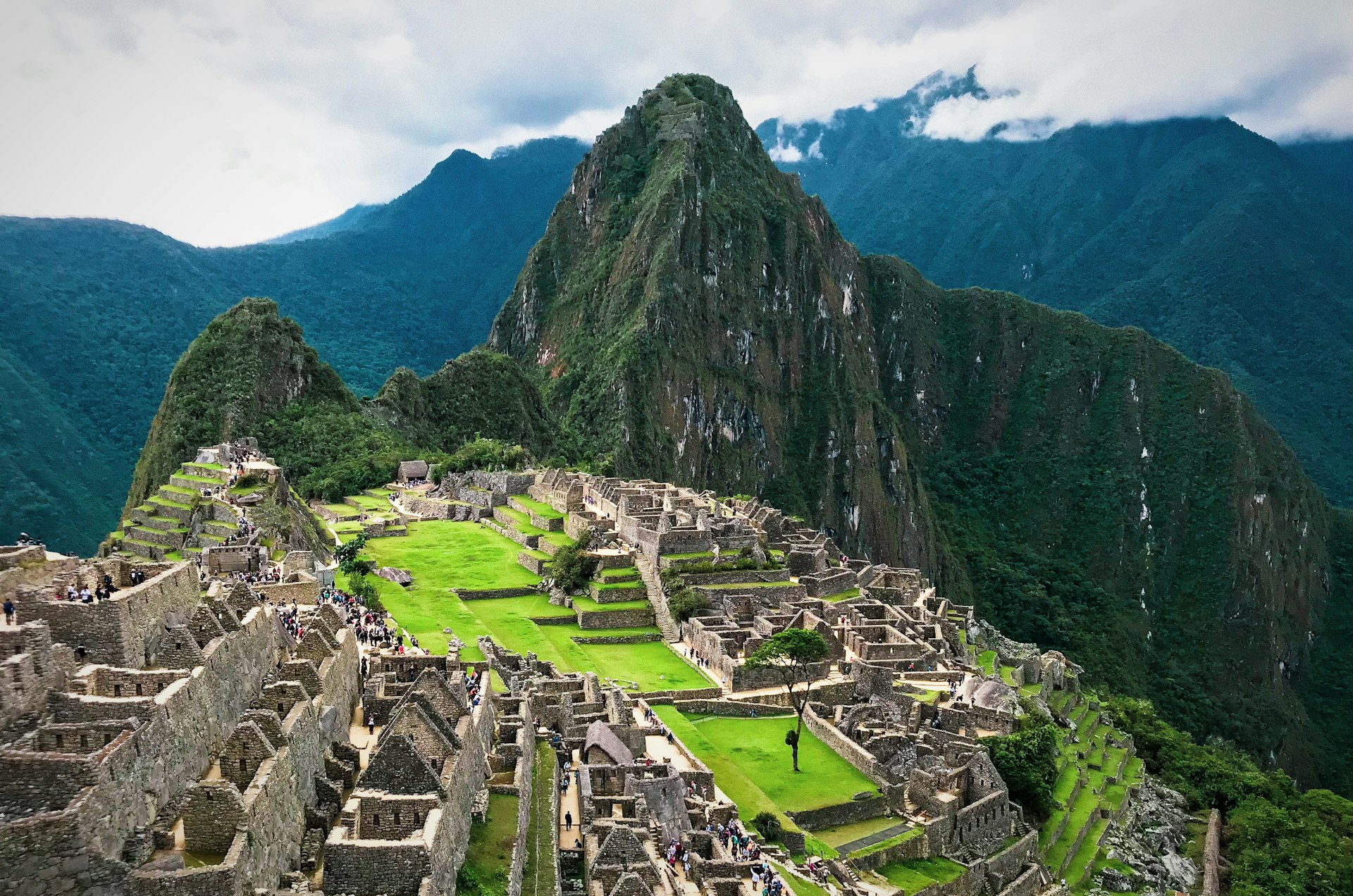
Seoul - Day 06
Gamcheon culture village is formed by houses built in staircase-fashion on the foothills of a coastal mountain, earning this village the nickname "Machu picchu of busan." many alleys that cut through this community are vibrantly decorated with murals and sculptures created by the residents. Jagalchi market is korea's largest seafood market, selling both live and dried fish. Most of the people who sell fish are women, so the vendors here are called jagalchi ajumma, "Ajumma" meaning middle- aged or married woman in korean. This market represents busan and is famous throughout the country. Visitors can eat fresh raw fish right at the market. Even nowadays visitors can see women selling mackerel, sea squirts (ascidians) and whale meat on wooden boxes along the road outside of the market and along the shore. Transfer to suncheon.
Visit to suncheonman bay national garden.
The suncheon bay garden was established in order to turn 1.12 square
Kilometers wide natural habitat into a conservation area, where it serves as a
Home over 505 species of trees and 113 species of flowers. The numerous groups
Of tulips and royal azaleas are truly a sight to see. In addition, the nearby 30,000
Square meter field& of canola flowers is in full bloom in may, which creates a beautiful yellow "Wave" of color and trees make a great shades of canopy for the area.
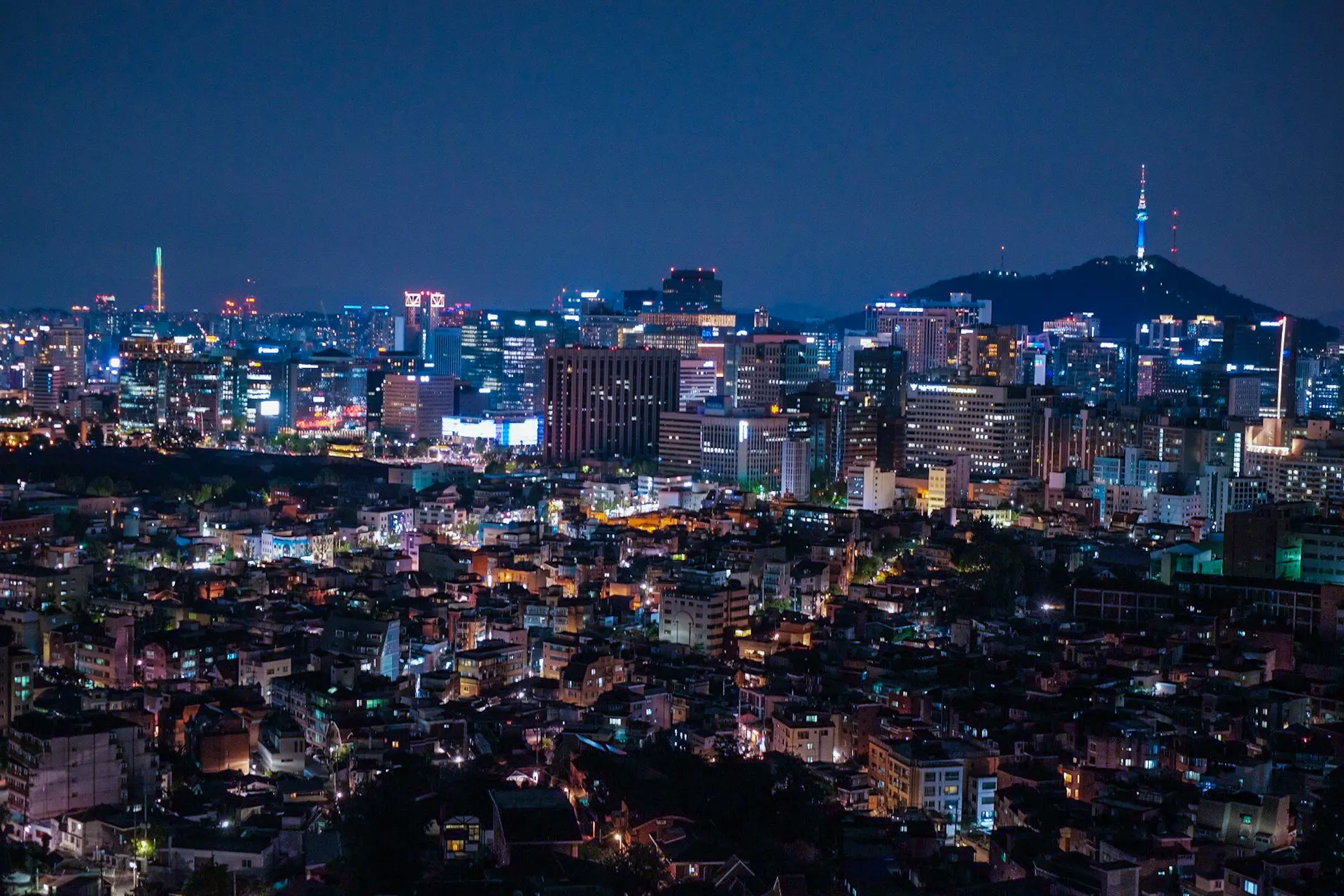
Seoul - Day 07
The traditional culture center is located near the entrance of jeungsimsa temple. A walk down the steps reveals the center’s impressive size as well as its beautiful design. At the traditional culture center, masters who have been designated as intangible cultural properties teach the public about traditional culture: pansori (traditional korean folk opera); gobeop (traditional drumming technique); gayageum (traditional korean zither); andthe table setting for pyebaek, part of the traditional ceremony. Performances are also held to demonstrate such elements of traditional korean art and culture.
Visit to penguin village: we put various odds and ends together and something special emerged.” village chief kim donggyun and other locals retrieved discarded items that they decided to use to adorn the walls in the neighborhood. Hundreds of household items and toys as well as old broken clocks were put on display, Turning ordinary alleys into a work of art and attracting increasing crowds. Its name was given by kim, who was inspired by a friend whose manner of walking he affectionately likened to that of a penguin.
Visit toyangnim history & culture village: yangnim history & culture village is located in the area where western items and ideas first entered gwangju over 100 years ago. As such, the neighborhood has a unique collection of western architecture mixed with traditional hanok houses. There are also many houses of christian missionaries, who facilitated the advancement of medicine and education in gwangju. Some areas such as penguin village have been decorated with murals and outdoor exhibitions to promote art and tourism, helping the elderly locals to make a living. Visit to may 18 archives, view folly observation desk.
The 5·18 archives systematically preserves and manages photographs, film and videos related to the may 18 democratic movement, which were listed in the unesco memory of the world in 2011. The first to third floors are devoted to permanent exhibitions that record the may protests as part of the heritage of humankind. On the sixth floor is the recreated office of yoon gong-hee, former head of the gwangju archdiocese.
Visit to1913 songjeong station market. Songjeong station market has stood next to songjeong railway station since 1913. The century-old. Traditional market was once bustling with people but experienced a downturn amid changing consumer trends. In recognition of the rich, storied tradition that sets 1913 songjeong station market apart from large supermarkets, efforts have been made to introduce changes that highlight the unique attributes of the market, so as to ensure that the market remains standing for years to come.

Seoul - Day 08
Juknokwon in damyang is a bamboo forest cultivated by the town of damyang. Seonginsan mountain behind damyang hyanggyo (confucian school) was transformed into juknokwon bamboo garden featuring a beautiful artificial waterfall, pavilion, walking paths and an eco-exhibition center, a popular destination for visitors. It takes about an hour to tour around the entire garden and to enjoy night walks, the lights are turned on in the evenings in the bamboo forest.
Transfer toseoul, hotel check in, free time for shopping
Myeongdong is seoul’s shopping mecca and is a must-see for tourists, but it is not just a shopping destination; myeongdong is also a hub of commerce, banking and culture with a daytime population of 1.5-2 million. For shoppers there is a mixture of street stalls and retail outlets selling everything from high fashion to casual attire, as well as many korean cosmetics stores offering high-quality products at competitive prices.

Seoul - Day 09
Lotte world: is a theme park filled with thrilling rides, an ice rink and different kinds of parades, as well as a folk museum, a lake, accommodations, department stores and more. Lotte world is divided into lotte world adventure, a world themed indoor area, and magic island theme outdoors, next to seokchonhosu lake. Lotte world adventure is the largest indoor amusement park in the world.
Lotte world tower: seoul sky is located on floors 117-123 of lotte world tower, the nation's tallest and the world's fifth tallest building (555 m). The observatory offers a panoramic view of the entire capital city, beautiful both day and night. In addition to the outstanding view, visitors can enjoy a small snack or coffee from the dessert cafe while sitting in the lounge or on the sky terrace. The observation deck has two story-high glass windows for an uninterrupted view. The sky deck, located at 478m, hold the guinness world record as the highest glass-floored observatory in the world. On days when visibility is limited, visitors can still enjoy a clear sky through the sky theater. Later we transfer to gangnam district to visit samsung d’light showroom. Many people tend to gather at gangnam subway station, as the location is geographically and commercially suitable as a meeting point for social gatherings, events or personal engagements. Hence, during the weekdays it is usually crowded in the evenings while on weekends, areas around gangnam subway station exit number 10 and 11, as well as city theatre, and giordano are often bustling with people. Visitors travel to gangnam to take advantage of its convenient transportation, fashion malls, movie theatres and bookstores.
Samsung d’light is samsung electronics' global promotion and exhibition center. Visitors can see all the latest samsung consumer electronic products here. The name d'light is a portmanteau of the words "Digital" and "Light", to correlate with their vision of being a "Guiding light to the digital world" and leading consumers to a whole new lifestyle through digital technology. The building consists of three floors with the first floor being an exhibition space for samsung's technology and devices. The second floor is a journey into the future with samsung solutions. The lower floor (b1) is the flagship store, where samsung devices are available for purchase.
Bongeunsais a buddhist temple founded in 794 during the silla (one of the three kingdoms of korea) period. The temple has more than 1,000 years of history and has many interesting historic and cultural features, including woodblock carvings of the avatamsaka sutra (flower garland sutra). Dongdaemun design plaza(ddp) is the newest and most iconic landmark of the korean design
Industry. Located at the center of the dongdaemun area, the ddp will serve as a key venue for design-related shows and conferences, exhibitions, and other events and gatherings. Designed by world renowned architect, zaha hadid, ddp is the world’s largest atypical architecture.
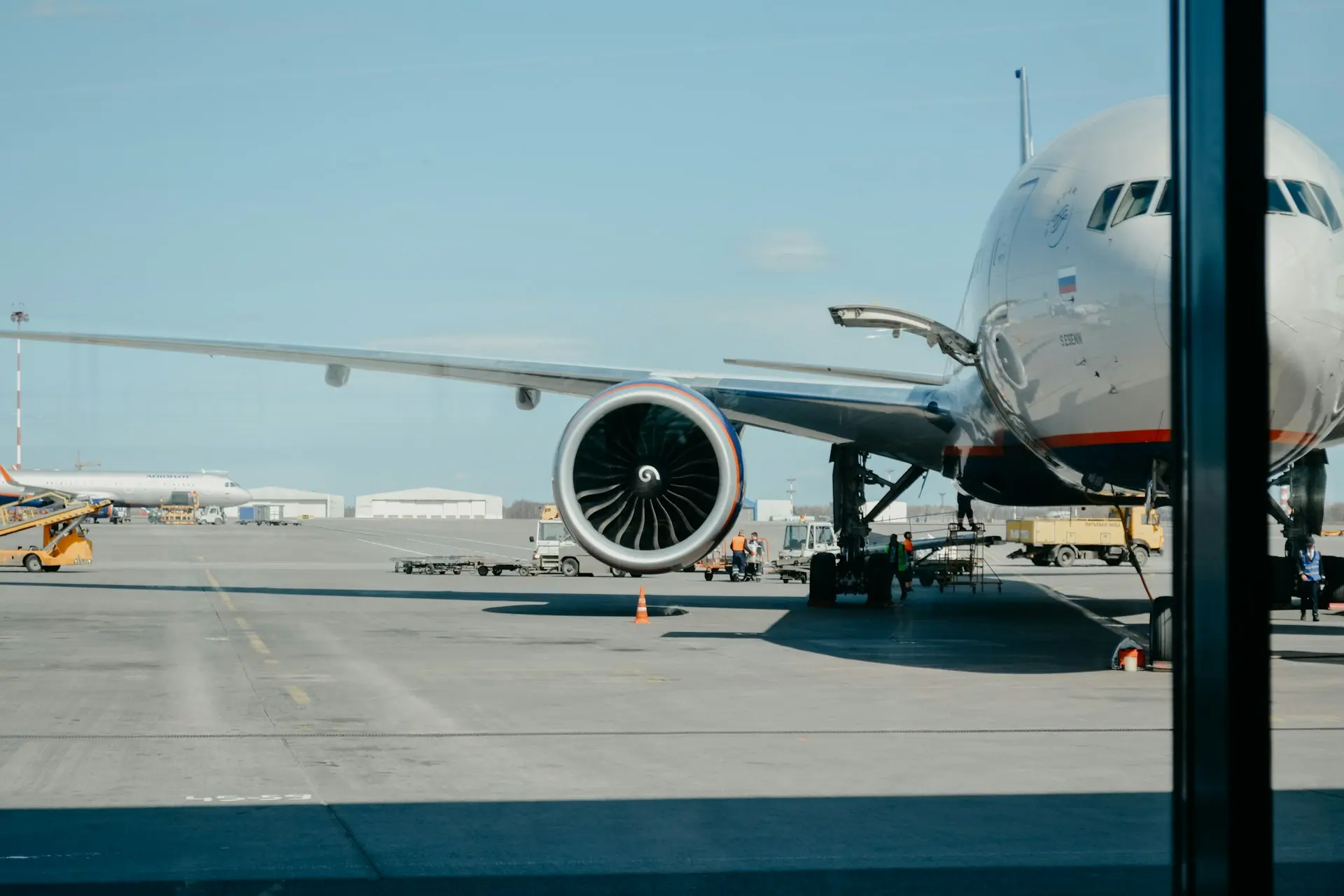
Seoul - Day 10
After breakfast, depending on the timings of your flight, you will be transferred to airport. We hope you had a memorable time in south korea.
🌟 Package Inclusions:
✔️ 9 Nights’ Accommodation in Chosen Category
🍳 Daily Breakfast at Hotel & 🍱 Local Lunch on All Days
🚐 Round-Trip SIC Airport Transfers (Minivan/Motor Coach) with English/Chinese Speaking Driver
🎟️ Entrance Fees as per Itinerary
🗣️ English Speaking Guide Escort During Excursions
👥 Price Valid for Minimum 10 Adults Traveling Together
❌ Package Exclusions:
🛫 Airfare
🛂 Visa Charges
🔍 Anything Not Specified Under Inclusions
📞 Personal Expenses (e.g., Telephone, Laundry)
📅 Peak Period Surcharges (28 Sep – 7 Oct, 23–25 Nov, 22 Dec – 2 Jan, 8–13 Feb 2024)
📌 Rates Not Valid During Exhibitions & Events
🏨 Rooms & Offers Subject to Availability at Time of Confirmation
⚡ Cancellation Policy (Per Person):
- ⌚ 45 days or Above: 100% Refundable (Deduction: Non-Refundable Component shall be deducted out of Total Tour Cost)
- ⌚ 20 to 44 days: 75% Refundable (Deduction: Non-Refundable Component shall be deducted out of Total Tour Cost)
- ⌚ 15 days to 19 days: 30% Refundable (Deduction: Non-Refundable Component shall be deducted out of Total Tour Cost)
- ⌚ 14 days or Less: Non-Refundable of Total Tour Cost
- 🏨 Hotel/Air: 100% of Total Tour Cost for Non-Refundable bookings
- 🚢 Cruise/Visa: Charges as per Actuals
💳 Payment Policy:
- ✅ 45 days prior: 75% of Total Tour Cost Payable
- ✅ 30 days prior: 100% of Total Tour Cost Payable
- 💸 Prices in INR & Subject to Change Without Notice
- ✉️ FIT Flight Packages: Full Flight Payment at Time of Booking
- 💶 For Tickets Issued on Time Limit: Full INR Component to be Paid Before Issuance
- ✉️ Valid for Indian Nationals/Foreigners with Indian RP
- 🏨 All Rooms Subject to Availability
- ⛔ No Air/Hotel/Conference Rooms Held Until Confirmed
- ✨ Holiday Surcharge Applicable if Required
- ⏳ Guest Responsible for Overstay Expenses Due to Flight Delays/Cancellations
✍️ Terms & Conditions:
🛂 Key Requirements:
- Valid Passport (min. 6 months)
- Confirmed Return Ticket
- Cash/credit card
- Valid Visa
- Hotel Booking or Local Accommodation Address
📃 T&C:
- ✔ All Prices in INR, Subject to Change Without Prior Notice
- ✔ Prices are subject to availability at time of confirmation. No provisional bookings are held at quote stage.
- ✔ Rates valid for Indian Nationals & Foreigners with Indian Resident Permit
- ✔ Booking confirmations depend on availability at the time of request.
- ✔ 🏨 All hotel rooms are subject to availability.
- ✔ ✈️ We do not hold reservations for air seats, hotels, or other services in advance.
- ✔ 📅 Holiday surcharge applies if applicable at the time of booking.
- ❌ Any overstay expenses due to flight delays, cancellations, or changes will be borne by guests. However, we’ll offer the best possible assistance.
- ✔ Tour Prices Valid as Per Quoted Dates Only
Other Tour Packages Might Interest You!
Check out what's new in our company !
?unique=446357c)
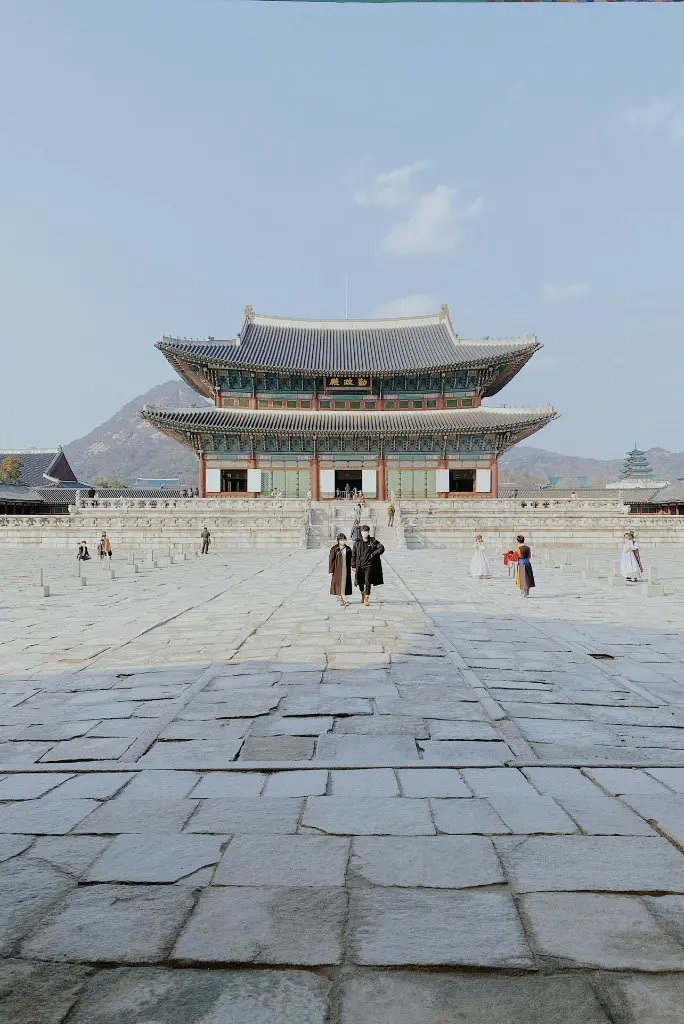
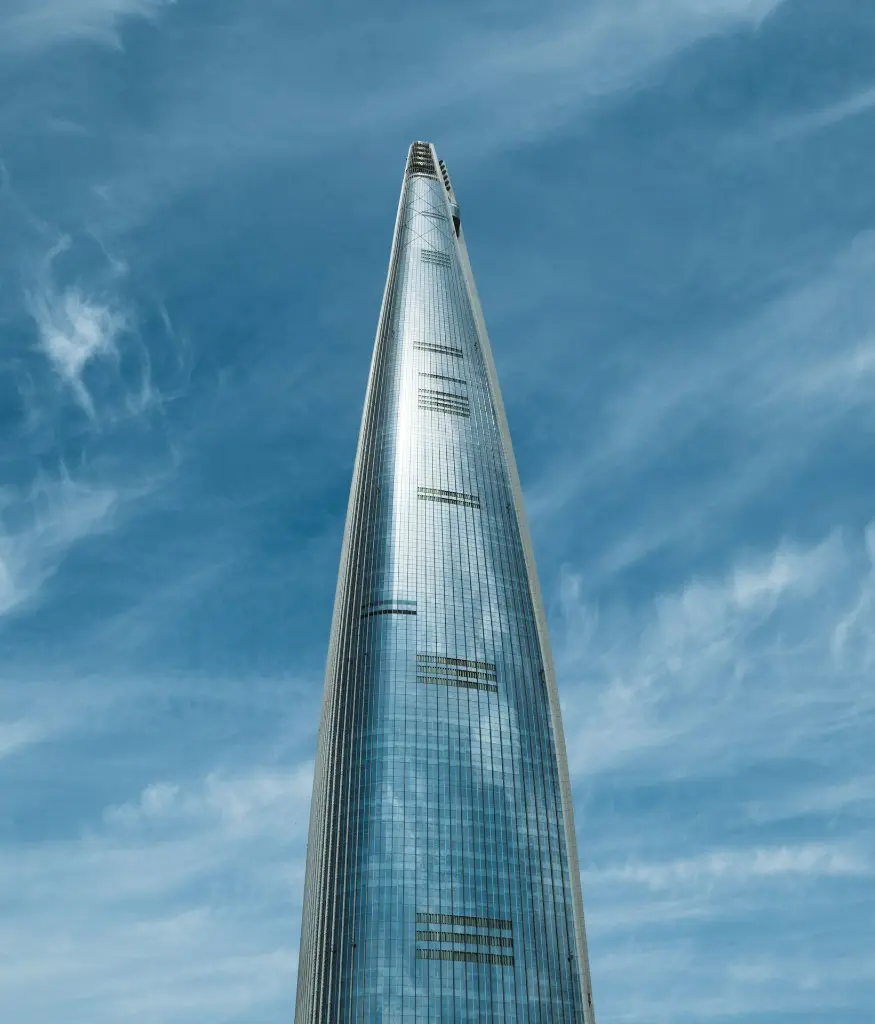
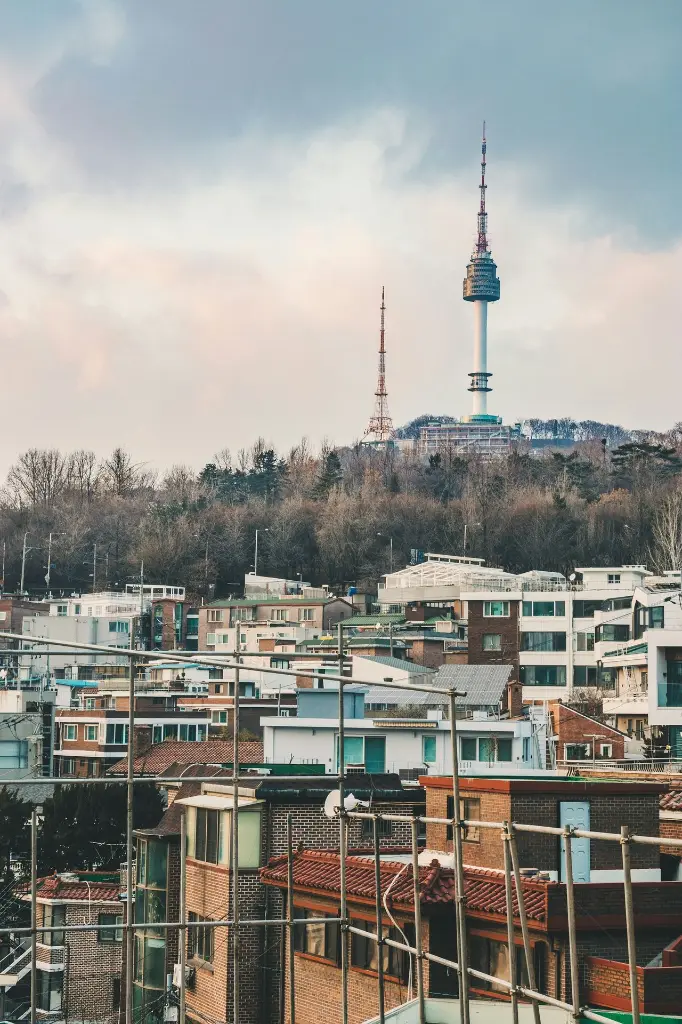
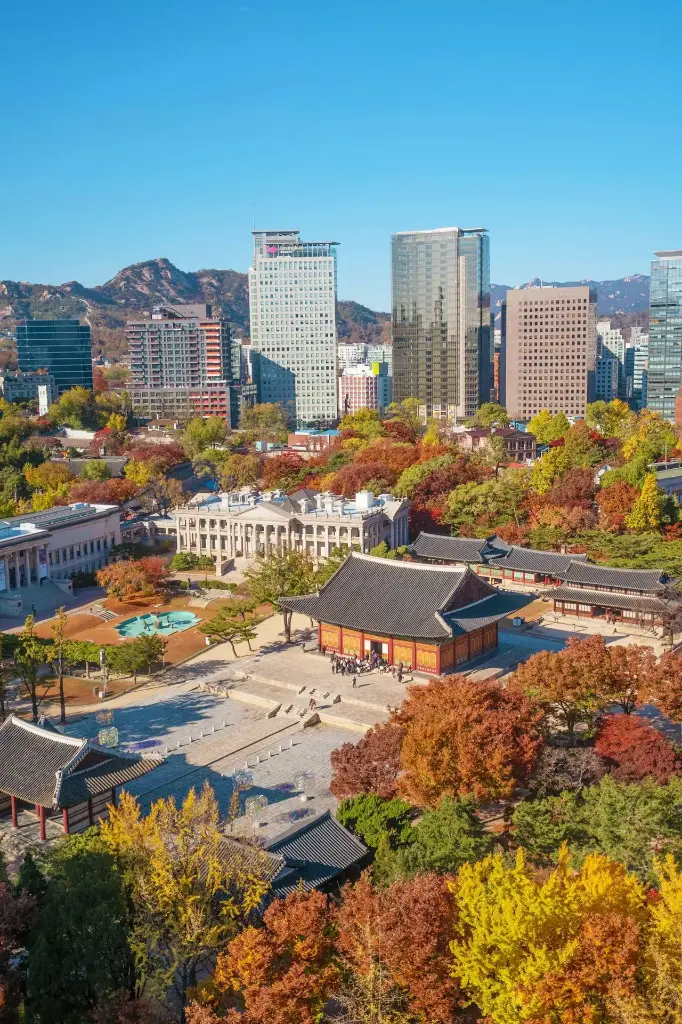
?unique=446357c)



